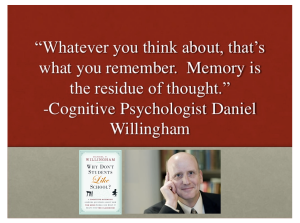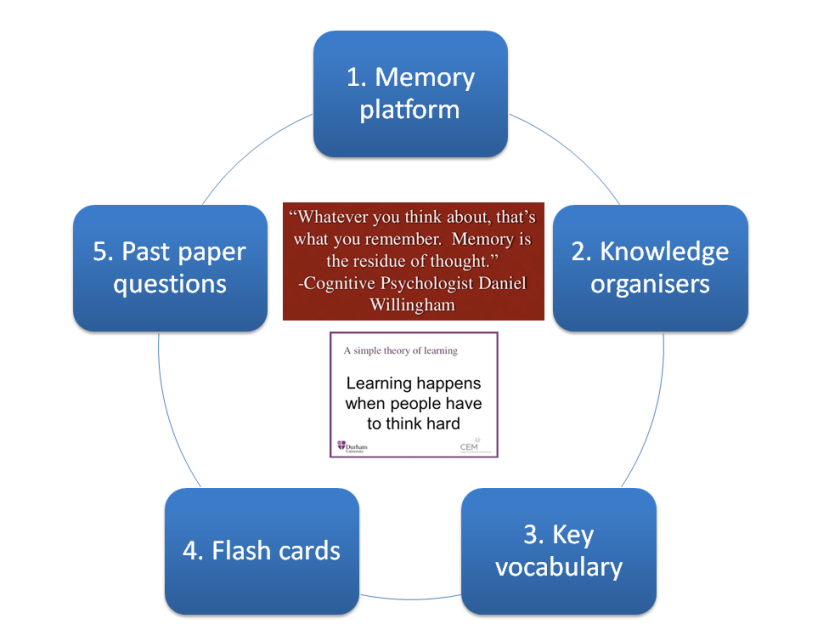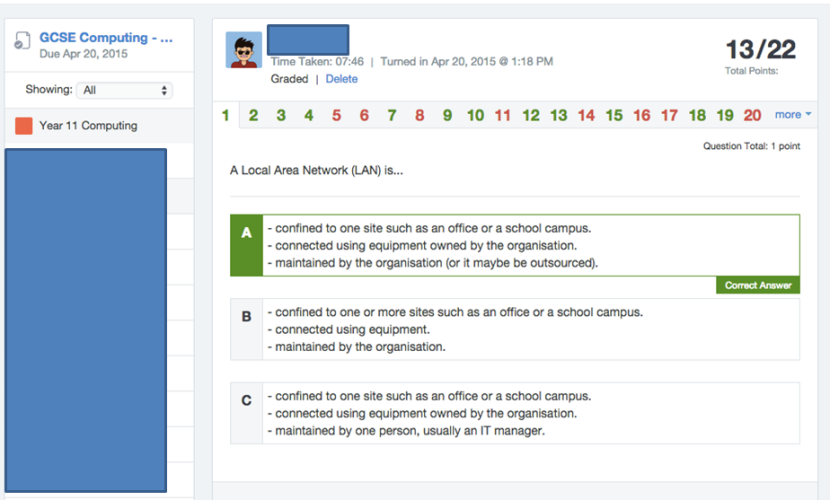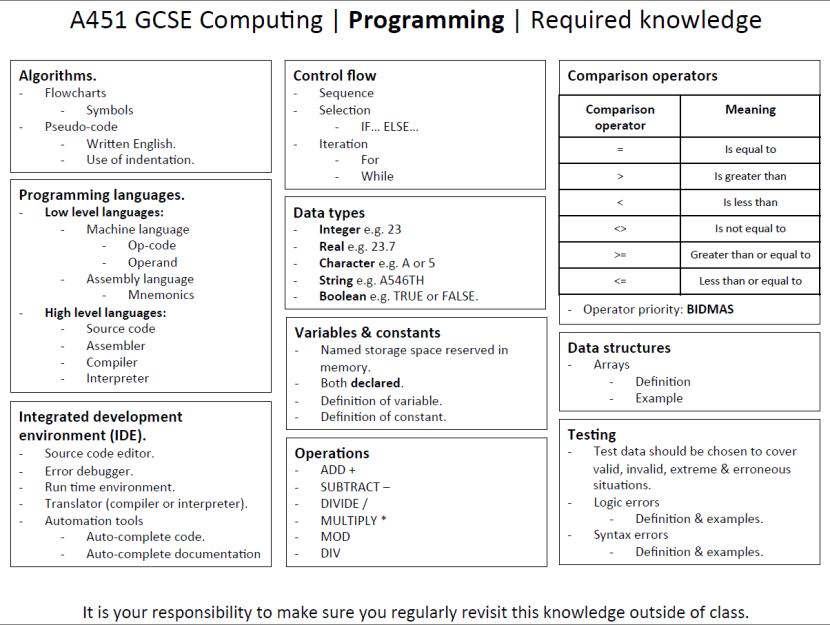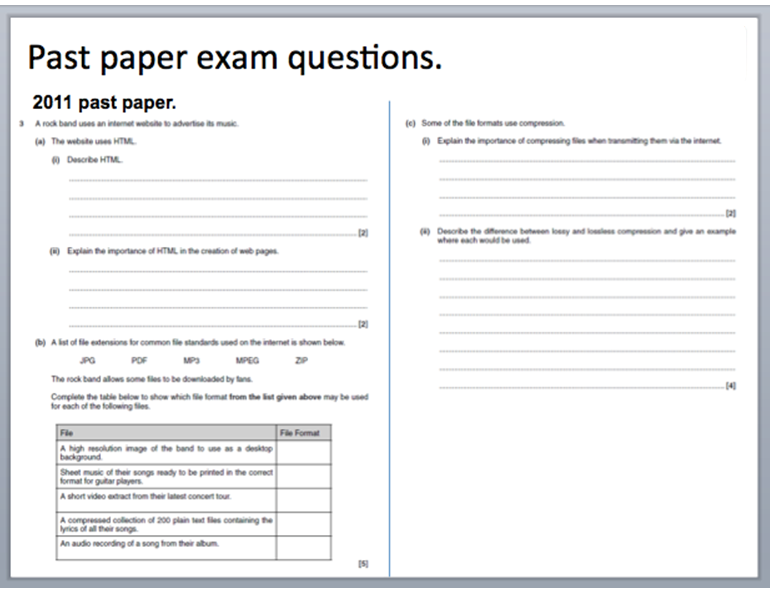Tagged: knowledge
Stop disadvantaging the disadvantaged // Some practical tips for teaching & learning.
There are no shortcuts or golden tickets. Get teaching right first. [Sir John Dunford]
Education is not just for the elite. It is for everyone regardless of the circumstances into which they are born. In order to ensure students are every background get the same opportunities as everyone else, teachers have to pay meticulous attention to disadvantaged students for it’s those students who stand to gain the most from effective teaching and learning.
‘Get teaching right’ or ‘quality first teaching’ gets mentioned a lot when talking about ‘closing the gap’ between disadvantaged students and their peers but what does this actually mean? Saying these things repeatedly is not overly useful – it doesn’t encourage teachers to change their teaching habits or reflect on their practice. Should teachers be doing things differently for disadvantaged students in lessons day to day? Probably not, but disadvantaged students should be at the top of a teachers thought process when teaching as it’s these students who stand to gain the most from teaching that increases subject knowledge and provides lots of opportunities to bring that information to mind.

What does it mean to be disadvantaged?
Dr Nicholls has a great insight into disadvantaged students here. He talks about the need to disrupt the loop of unequal outcomes for disadvantaged students and has come up with a list (this does not assume all disadvantaged students are affected by these things) that highlights some of the key factors that may identify a young person as disadvantaged…
Another significant factor that relates to learning is that disadvantaged students tend to arrive at secondary school (and primary school) with a lower number of words in their vocabulary and a distinct lack of cultural knowledge (compared to their peers) which restricts their understanding and delays their progress. Joe Kirby makes a great argument for scientific based curriculum design here that would certainly help close the knowledge gap for disadvantaged students.
What can teachers do day to day?
Routines. A lack of routine can disrupt the start of a lesson, waste time handing out books, lead to confusion and a general misunderstanding of expectations in a classroom, all of which will affect learning for students. Consider:
- How will students enter your classroom and what will they need to do upon being seated? For example what if the expectation was that students had 30 seconds to enter and get seated and then immediately completed a short quiz of 4 or 5 questions that tested their knowledge of lesson content from last week, last month, last term and last year? The accumulative effect of this interleaved approach on learning could increase a students knowledge over time whilst providing a smooth start to the lesson that focuses on learning from the outset.
- Also consider your routines/expectations for:
- getting students to be silent.
- TRY: ‘3,2,1, eye contact’ and explain to students that once you get to 1 all students should have eye contact with you. This is a great way of getting students attention. Be persistent, habits don’t form over night.
- questioning and how students should respond [see below].
- handing out books / resources – what’s the most time efficient way to do this? Are students trained in this so that it becomes automatic? Every second counts!
- circulating the room whilst students are working? Do you check in on disadvantaged students first?
- working environment during a task – what is the default noise level? Purposeful, directed talk amongst students is useful for developing understanding but when this is not part of the task do students need to talk? A noisy classroom makes it difficult to concentrate for long periods of time.
- getting students to be silent.
Directed questioning. No reasonable person would expect a teacher to know every disadvantaged student that they teach (especially with large cohorts) so use your annotated seating plan.
- TRY:
- Don’t be afraid to have your seating plan in your hand whilst questioning and use it to ensure disadvantaged students get questioned regularly. I’ve seen teachers use this strategy in my own school to great effect.
- Use the no opt out strategy from TLAC – don’t allow any students (let alone disadvantaged to simply say ‘I don’t know.’ Give them wait time, let them look over their notes before attempting answer. Circle back to them to ensure they have understood.
- Use ‘no hands up’ when questioning. This blog from the Learning Scientists highlights the negative affect ‘raising hands’ can have on student performance… Asking students to raise their hand to signal their achievement (when they knew an answer) highlights differences in performance between students, making it more visible. This can lead to students in lower social classes, or with lower familiarity with a task, to perform even worse than they would have.
Frequent quizzing. As already stated this is a great routine for getting students into a class and settled whilst also benefitting their learning. As Joe Kirby suggests in his blog, we have over 100 years of scientific studies that frequent testing is the best way to disrupt the curve of forgetting. The best thing about low stakes quizzing is that teachers don’t need to grade, track or spend hours marking them. They can be self-marked by students as teachers explain the answers and knowledge gaps can be addressed immediately.
- TRY: For the next six weeks instead of your planned starters try quizzing students at the beginning of each lesson using the ‘last week, last month, last term’ approach. What do you notice about their learning? What if students were quizzed at the beginning of every lesson, every day, every term? Would that help balance out the knowledge deficit?
Modelling. When teaching it’s important to model what great performance looks like in your subject and even more important that you model the process (meta-cognition) of how to approach problems / tasks. The EEF see meta-cognition as one of the most impactful learning strategies that especially helps disadvantaged students.
Feedback. This is another strategy which the EEF deems to have high impact on student performance. The most important thing about feedback is that students do something with, ideally acting on the teachers feedback to improve their work and consolidate or extend their understanding. How can teachers be more meticulous with their feedback for disadvantaged students?
- TRY:
- Marking little and often rather than a whole set of books in one go. I’m not a fan of ‘marking PP books first’ as this suggests that other student books are less important or may receive feedback that is of less quality then the books marked first – which is wrong.
- Try whole class feedback that addresses common misconceptions.
- When conducting a feedback lesson have your annotated seating plan in your hand and visit the disadvantaged students frequently to ensure they have understood and are acting upon your feedback.
Read. Encourage students to read lots. Make it part of your lessons and teaching rather than an ‘add on’. As Katie Ashford describes, a good reading lesson should follow these principles…
- In any lesson, reading should primarily be for comprehension. Pupils need to understand what they are reading, and so the teacher should pause at appropriate moments and check for understanding.
- Reading is an opportunity to improve pupils’ fluency and ability to read with expression. Teachers should therefore model good reading and ask pupils to read aloud (year 7s love this, so get them into that habit then- it’s harder as you go up the school, in my experience).
- Reading is an excellent opportunity to improve pupils’ vocabulary. Teachers should pause to explain the meaning of key words, and may want to give further examples of new words used in context.
A list of strategies for reading in lessons can be found here.
TRY: As part of explaining a new concept give students a a passage of text to read that explains the concept (perhaps with a diagram if appropriate) to compliment your explanation. This could be read as a class or individually. If this habit is formed over a time it could help increase student vocabulary, fluency and understanding whilst enabling them to read outside of their normal experience (e.g. scientific articles, classical literature, e.t.c.).

Image: @gapingvoid
The thing that does make a difference, not just for disadvantaged students but for all students is effective teaching and learning. The challenge for teachers is ensuring that disadvantaged students get overexposed to this every lesson as it is those students who stand to gain the most. Be bold. Be courageous. Have relentlessly high expectations of all students. Form effective habits and don’t leave anything to chance. We only get one chance to help all students access the opportunities they all deserve.
“To build a better world we need to replace the patchwork of lucky breaks and arbitrary advantages today that determine success–the fortunate birth dates and the happy accidents of history–with a society that provides opportunities for all.” [Malcolm Gladwell]
Knowledge organisers // New OCR GCSE Computer Science
Having used knowledge organisers with students for almost two years now, it’s always a great starting point when planning for a new specification of GCSE. Inspired by Joe Kirby’s post, knowledge organisers seek to…
Specify subject knowledge in meticulous detail.
I’ve written before about knowledge organisers (read more here).
In planning for the new GCSE Computer Science specification I’ve created a number of knowledge organisers (making use of the OCR specification booklet). Feel free to download, use, share, edit, e.t.c.
Paper 1 – Computer systems
Paper 2 – Computational thinking, programming & algorithms
*some of the topics have been combined into one knowledge organiser.
Knowledge organisers for GCSE Computing
Always in the pursuit of doing better for the students I teach, two posts have made me reflect deeply on my practice this week.
1. Knowledge organisers by Joe Kirby.
In the post Joe describes how he specifies the subject knowledge required for a given topic in meticulous detail. This is useful for a few reasons:
– it clarifies for the teacher exactly what the students need to know and enables more precise planning.
– it serves as a good benchmark for students at the beginning of a topic. Seeing the required knowledge laid out in front of you on a side of A4 is extremely powerful and will enable students to highlight what they are already know.
– when it comes to revision, students have real clarity about the knowledge they need to know.
During my relatively short time as a teacher, when starting a new topic I may have shared a vague outline of what the topic will involve but never to the detail suggested in Joe’s post. I feel like a trick has been missed here, which is why I plan to experiment with knowledge organisers from this point forward.
2. Sequencing lessons in the run up to exams by Andy Tharby.
Andy’s post puts into practice Joe’s knowledge organiser for a GCSE English class. Andy also describes in depth his approach to a series of lessons leading up to an exam. Lessons follow a similar routine (although the stages of each lesson might involve different delivery styles / mediums):
1) Begin with a ‘memory platform‘ where they will be tested on key knowledge/quotes from the knowledge organisers using a wide range of quizzing methods. Students need to be fluent in this knowledge and to do this they will need to cover it repeatedly. They will be encouraged to elaborate on these points of knowledge, exploring their wider significance.
2) Revise and extend a key area. OMAM and AIC – the green lessons – will be taught side-by-side, whereas the poems will be revised in pairs.
3) Lessons will end with 15 minutes of deliberate writing practice where students will be expected to hone the finer parts of their analytical style by writing a paragraph at A/A* standard – this is a top set – based on the content of the lesson (modelling and scaffolding will feature here too).
When planning revision sessions (and in a broader sense planning a curriculum structure) it’s worth thinking about the following:
If learning happens when we think really hard about something and we remember what we think about, then engaging students in activities, practices and routines that encourage this is probably a sensible course to take.
GCSE Computing revision.
As a result of reading the aforementioned posts and adopting the collective thinking of Professor Coe and Daniel Willingham, I have developed a revision structure for a GCSE Computing class I teach. It follows this cycle:
1. Start with a memory platform, usually a multiple choice quiz (these are deliberately rigourous with any one of the three answers a potential correct answer, forcing students to study the different answers and think hard about theirs).
2. Knowledge organisers. I have only just started using these as prompted by Joe and Any’s blog posts earlier this week. But I intend to use them at the beginning of teaching a topic as well as revision. It’s a collection of documents that will be referred to throughout the entire course. in revision sessions the knowledge organiser is an opportunity to see an overview of the knowledge and pick out the things they can remember and the things that they need to revisit first.
3. Key subject specific vocabulary. Students are then given time to recall key terms from memory for a particular topic. This is followed up by the TLAC technique ‘Check or change’ where students check their definitions against correct definitions and make changes if needed.
4. Flash cards. Students are then given time to create a set of flash cards based upon the key subject specific vocabulary. Flash cards have previously been identified as a more effective revision technique. I’m working on the premise that if students are comfortable with the subject specific vocabulary then they should be able to at the very least attempt every question for that topic (obviously they need to understand the context of each question, that comes next). Feedback from students has been really positive as the motivation to use the flash cards appears to be higher than to write out copious notes.
5. Past paper questions. Finally students attempt past paper questions, using the subject specific vocabulary in different contexts. I have also experimented with working through long answer questions with students using the following routine:
- students attempt a question in exam conditions
- teacher works through the answer with the class using students answers to prompt discussion and supportive critique
- students attempt the same question again in exam conditions
- teacher works through answer again with the help of students to model an answer
- a similar question (that requires the same knowledge but uses a different context) is then used as a starter in the next lesson.
Impact.
It’s hard to evaluate how much of an impact the above strategy will have on exam performance but…
… from a teaching perspective, revision sessions certainly seem more focused with a greater clarity of what students need to know for each topic which lends itself to more precise deliberate practice.
… students have a much clearer picture of what they need to know and the work they are producing is of better quality and a greater depth. Students are more inquisitive and motivated to increase their knowledge.
… lessons have a greater sense of urgency to them.
RESOURCE: GCSE Computing knowledge organisers.
Computer systems [.PDF] [.PPTX]
Data representation [.PDF] [.PPTX]
Complete set of knowledge organisers in one file [.PDF] [.PPTX]
Teaching that STICKS – Planning a ‘sticky’ lesson.
How do we make learning stick?
Chip & Dan Heath’s most recent book ‘Made to stick’ provides a framework for making ideas ‘sticky.’ If you’ve not read the book I’d advise getting a copy. Whilst you’re waiting for your copy to arrive, I’d recommend watching the following two videos to get an overview of the Heath brothers ideas.
The Heath brothers brilliantly summarise a ‘sticky’ idea here…
A sticky idea is an idea that’s understood, that’s remembered, and that changes something (opinions, behaviors, values). As a teacher, you’re on the front lines of stickiness. Every single day, you’ve got to wake up in the morning and go make ideas stick. And let’s face it, this is no easy mission. Few students burst into the classroom, giddy with anticipation, ready for the latest lesson on punctuation, polynomials or pilgrims.
Here’s the good new about stickiness: This isn’t just interesting trivia about how the world of ideas works. Rather, it’s a playbook. There are very practical ways that you can make your teaching stickier.
In the book the Heath brothers come up with a framework called SUCCESS which can be used to deliver knowledge in a more memorable way.
Shaun Allison’s post captures the essence of the SUCCESS framework in this graphic…
Planning a ‘sticky’ lesson.
All of this has made me reflect on how I approach planning a lesson and I now believe that I can not only use this framework to help hook students into content, but help them remember it at the same time (I’m not ruling out the importance of deep, deliberate practice here). This is especially important at the beginning of new units and topics where baseline knowledge of students may be little or non-existent. Inspired by the ‘5 minute lesson plan’ series I’ve created a ‘Sticky’ planning document that would work just as well for lessons as it would do for workshops (in fact I used it recently to plan a workshop on GRIT I delivered to colleagues on an INSET day – blog post to follow). Here it is…
How does it work?
Top right hand corner is probably a good place to start. What do you want students/colleagues to think about in the session? Why is this important? Consider this English lesson about Romeo & Juliet whereby students were creating puppets of characters to act out a scene (Ofsted – Moving English forward report – March 2012). What do you think students were thinking about during the English lesson – the characters of the play or how to make a good puppet? It’s important to design experiences that will enable the audience to think about the core knowledge or practice key skills (this is explored further in the book ‘Seven Myths about education’ by Daisy Christodoulou. Daisy specifically refers to this lesson in myth 6: ‘projects activities are the best way to learn’).
Once you have decided what you want your audience to think about during the session you can think about how you can make this stick by using the SUCCESS framework on the left hand side. This is Shaun Allison’s brilliant example from a year 11 Science lesson where he wanted to introduce the idea of nuclear radiation:
Simple – I anchored it on to their existing knowledge of the atom, by getting them to draw and explain the structure of the atom, which we then shared and discussed. This would then lead on to two key concepts for the lesson – be able to describe and explain Rutherford’s scattering experiment and what an isotope is. This is definitely not about dumbing down or lowering expectations. It’s about distilling complex ideas into the key ideas and then using what they already know to build up to these complex ideas. In his article on explanation (see below) David makes the point of how important it is to use specialist academic language here – and insist that students do too.
Unexpected – In order to get them curious, we looked at photos of Chernobyl and posed the question, how could these tiny atoms cause such devastation? This is the gap in their knowledge that we were going to fill, having opened it. They were curious!
Concrete – Rutherford’s scattering experiment is very conceptual, so I demonstrated it by throwing squash balls at footballs. They bounced off, in the same way that early scientists expected the alpha particles to do when they hit the ‘plum pudding’ atoms. This led on to a discussion about what it meant when the alpha particles went straight through?
Credible – The photos of Chernobyl helped with this, as it made the issue very real. This can also be backed up by statistics e.g. claims that Chernobyl won’t be fit for human habitation for 20 000 years. However, this will be returned to next lesson, when we get out the radioactive sources and the Geiger counter. Students will see that objects emit radiation.
Emotional – The photos of people who had been affected by Chernobyl (mutations) certainly made them feel for the people. The ‘emotional’ trait can also be developed by making students feel aspirational.
Story – Science provides loads of opportunities to tell stories – and the story of Rutherford’s scattering experiment was no exception. It also resulted in some great questions from the students about ‘How science works’ e.g. Why didn’t he just believe the plum pudding idea? What made him think of this experiment? Did he do any other experiments? Did people believe him? How do we know he’s right? Brilliant fodder for the science teacher!
The last section of the plan can be used to plan out the logistics of your session – timings, activities, resources, e.t.c.
Resource.
Sticky plan (editable) – print double sided on A3.
‘Teaching that sticks’ by Chip & Dan Heath.
Impact?
The SUCCESS framework has certainly made me think about how I deliver information, whether in a lesson, staff briefing or workshop. The power of a story certainly hooks people in and when pitched correctly using concrete, emotional examples I believe greater depth and retention (by the audience) is reached. Using the above plan to design a recent workshop (I’ll upload a copy of my plan if I can find the original paper copy!) made me really think through the content before hand and how it might be perceived. The SUCCESS framework made me think about how I would like to learn about the knowledge I was trying to deliver.
Next steps.
I’m going to be using it for future workshops that I deliver on INSET days and next term I intend to use it to plan a series of lessons. Why not give it a go yourself. Try planning a lesson or workshop using the ‘sticky’ plan. I’d really like your feedback on how it can be developed.
#neverstoplearning

